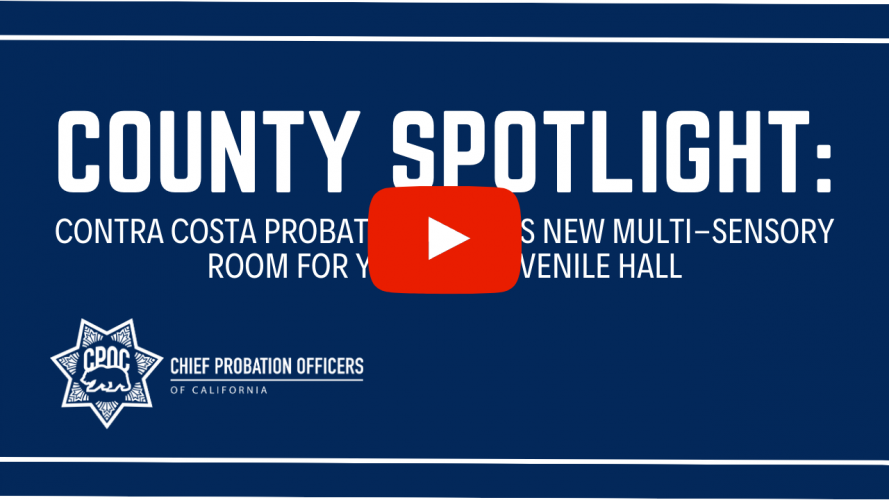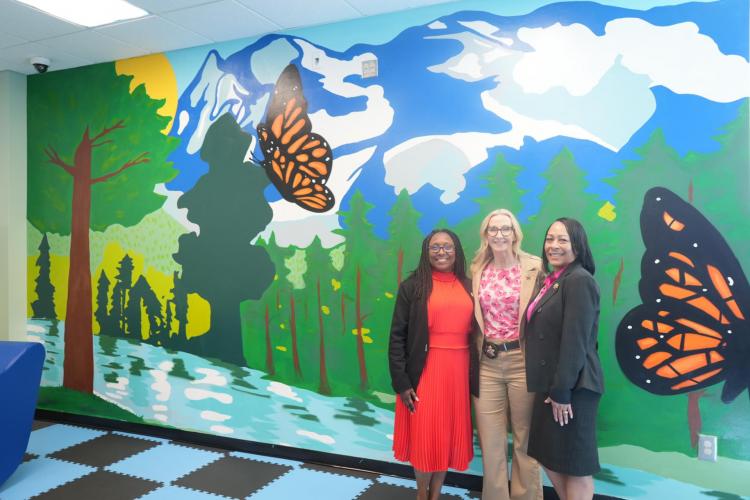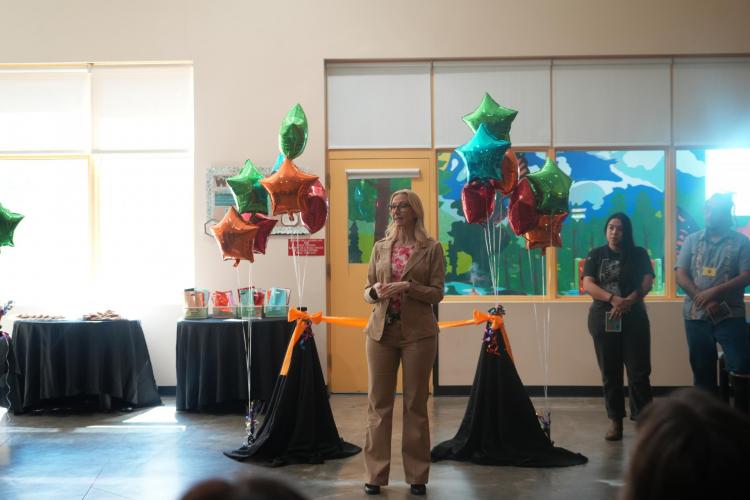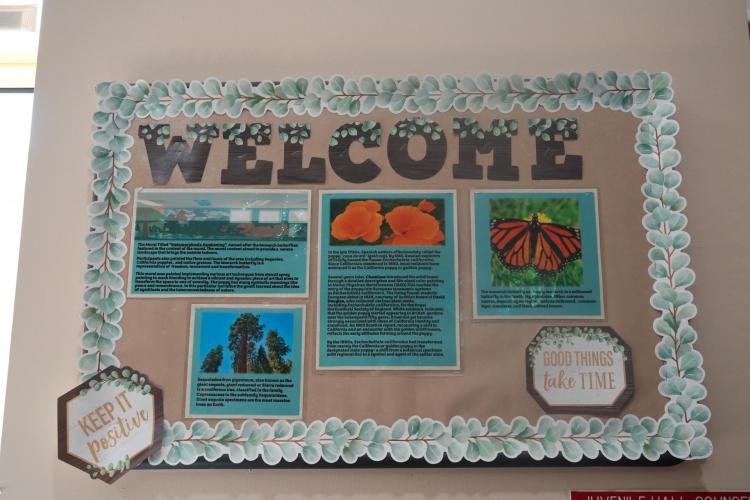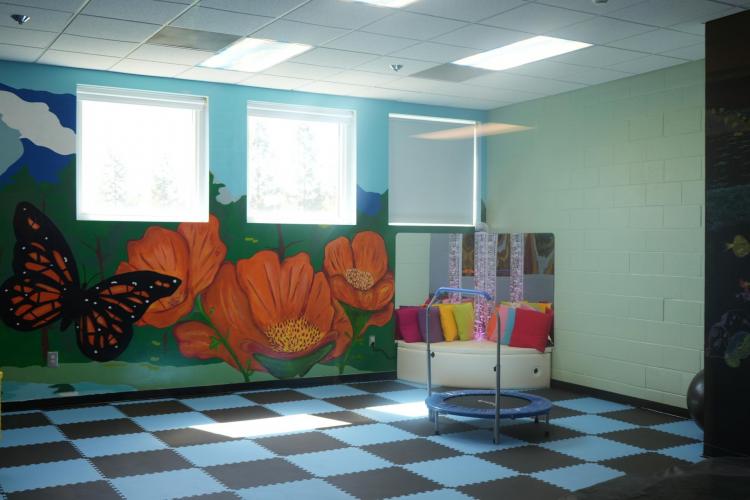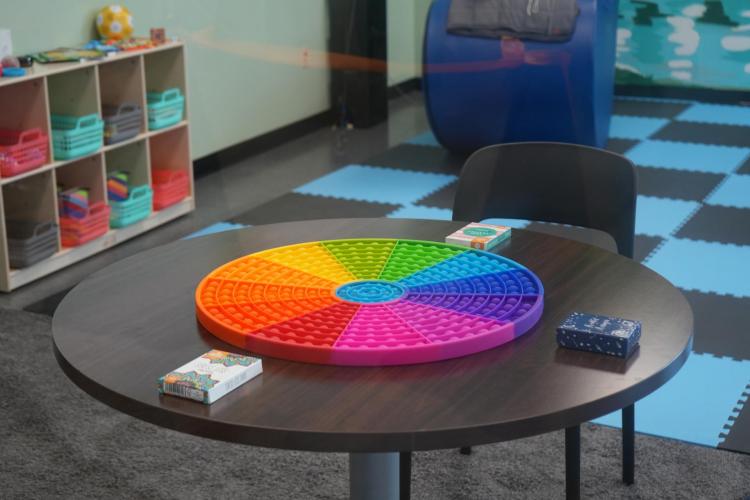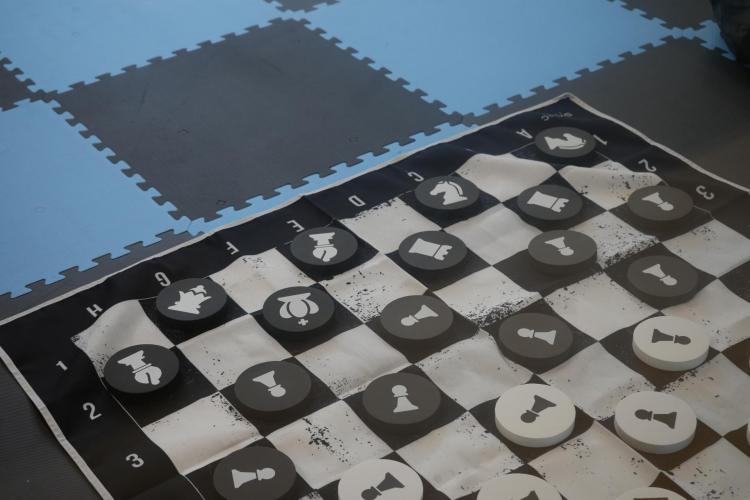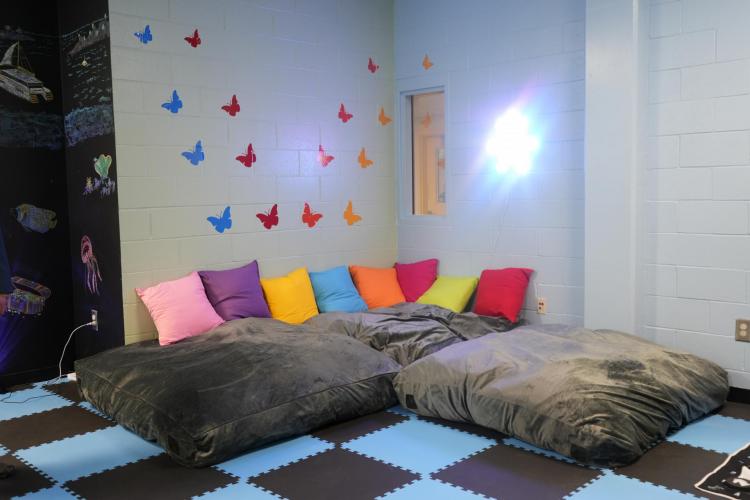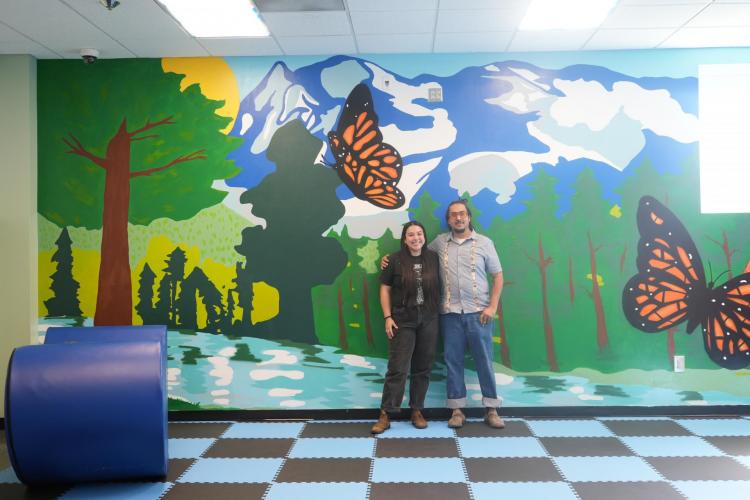#CAProbation Spotlight: Contra Costa Probation Unveils New Multi-Sensory Room for Youth
On March 20th, 2024, the Contra Costa County Probation Department unveiled a brand new multi-sensory de-escalation room for youth at the John A. Davis Juvenile Hall in Contra Costa County.
Chief Probation Officer Esa Ehmen-Krause, along with Manager Tamara Gusman-Taylor and Director Malkia Crowder welcomed the crowd of probation partners and staff to celebrate the grand opening, provided a tour of the room, and encouraged people in attendance to enter suggestions for the room name.
The concept of a Multi-Sensory De-escalation Room (MSDR) within the California Probation community started with the Sacramento County Probation Department’s Room in 2016, which Contra Costa County Probation staff extensively toured before their own journey began. Since then, additional Probation departments in other counties have also created their own versions of therapeutic and sensory rooms including San Mateo County Probation’s MSDR “The Reef” and Sonoma County Probation’s Music Studio. These multi-sensory rooms encourage creativity, cognitive development, de-escalation, positive engagement, and safe environments.
The Contra Costa MSDR room is bright with plenty of windows, a colorful nature theme with a multi-medium art mural covered with trees, butterflies, and California poppies. The mural is titled “Metamorphosis Awakening”, named after the Monarch butterflies that are featured in the mural. The content of the mural aims to provide a serene landscape that brings the outside, indoors.
The mural was designed by Muralist Eduardo Valadez Arenas and Fabiola Danielle Quiroz, with the participation from about 90% of the youth living in the facility. In fact, Valadez Arenas said that of the 16 hours of work across 8 sessions including the youth, the youth themselves did about 80% of the work. Valadez Arenas and Quiroz only spent 2 short sessions touching up the art, and openly welcomed and encouraged the participation from the youth. Youth painted the flora and fauna of the area including the Sequoias, California Poppies, and native grasses.
The mural was painted implementing various art techniques and forms, from stencil spray painting to wash blending, to achieve a vibrant and dynamic piece of art that aims to transform the space to one of “serenity”. The Monarch butterfly is a representation of freedom, movement, and transformation. The California poppy has many symbolic meanings like peace and remembrance. In this particular narrative, the youth learned about the idea of symbiosis and the interconnectedness of nature. The active participation of the youth in the project, combined with the therapeutic influence of art, freedom of creativity, and varied art forms made the project very special for everyone involved, especially the youth.
“This is the proudest I’ve been in my entire life.”
- a youth after working on the
mural
Valadez Arenas and Quiroz were excited to share the positive impact working with the youth, and partnering with Contra Costa County Probation, shared their eagerness to partner with more counties and probation departments to help youth create more murals and learn to express themselves through art forms. They were able to encourage youth to explore art mediums, seek to use their art skills for beauty and positive impact, and the reality of art being a profession upon entering back into their communities.
You can contact Eduardo Valadez Arenas and Fabiola Danielle Quiroz via email to inquire about mural availability.
Youth participation in the artwork of the mural during the project is just one part of the greater commitment Contra Costa County Probation has to the well-being and behavioral health needs of their youth, and the mural is just the start of the “basket of tools” youth have the ability to utilize in the MSDR.
Items in the room include a variety of products from stress balls, weighted blankets, VR headset, essential oils, giant checkers/chess set, lights, bubbles, extra large connect four game, and calming music to help youth de-stress and de-escalate.
According to the Sacramento County Probation Department, “moments of stress and escalation can be used as a tool for engagement, not isolation. The Multi-Sensory De-escalation Room (MSDR) is designed to provide residents meaningful learning experiences before, during, and after crisis to help them progress toward effective internal regulation of their behavior. A time of crisis can be an opportunity for learning; the soft music, wall murals, and variety of manipulatives in the MSDR encourage the dysregulated resident to interact with the environment as a way of de-escalating.”
- Engaging a youth with sensory disorders can be a challenging task, especially as a lot of learning equipment can be dull or daunting. Someone with a sensory disorder often finds the outside world a challenging and stressful place where they don’t feel in control. This can significantly impact their development. The benefits of an MSDR are Safe and Engaging for those with sensory disorders.
- Another benefit is the Personalized Effect for the experience that can be created for every youth, unique to their needs at the moment. A variety of calming or stimulating effects can be created depending on which type of sensory tool or calming equipment is chosen by the youth during their visit.
- The eye-catching equipment and stimulating products which are included in multi-sensory rooms can help with Improved Concentration and Alertness, which makes engaging outside of the sensory room more successful.
- Sensory rooms can encourage Gross and Fine Motor Skill Development in a fun and motivating way. Products that encourage balance, muscle strength, coordination, and flexibility are essential components of a sensory room.
- MSDR rooms can also provide users with the opportunity to explore Cognitive Development through cause and effect as youth are learning how their actions have an impact in the world around them. This will, in turn, help the user to cope in situations where their reactions might otherwise have been extreme due to sensory overload.
The concept of an MSDR is to encourage self-regulation in youth. According to the Sacramento County Probation Department who piloted the concept first in California, “A resident’s ability to use the resources in the environment to calm his/her emotions with staff engagement is a critical step in the process of self-regulation. Because of the pleasant look, sound, and feel of the room, the MSDRs can be experienced positively by the residents as a resource and not negatively as a punishment. Through an assessment process the MSDRs are used proactively to identify a resident’s triggers, strengths, supports, and suggested sensory activities that may help with internal regulation. The MSDR environment promotes engagement and interaction between the resident and staff in a non-adversarial manner. Staff are trained to engage residents and to be aware of their need for space. Though the resident’s space needs are respected, the resident is never left alone in the MSDR.”
The benefits of sensory equipment include:
- Reducing stress levels
- Improving self-awareness
- Refines gross and fine motor skills
- Learning cause and effect
- Improving communication skills
- Developing social skills
- Increasing self-confidence
As more probation departments and counties continue to implement sensory rooms, art, music, and various tools to promote positive behavior change and the well-being of youth across the state, California Probation continues to be a proponent of positive youth development and the connector in our justice system to the rehabilitative needs of youth.
–
View a video highlighting the event here: https://youtu.be/7dy-NN5TGFQ
–
View photos from the unveiling and grand opening of Contra Costa County Probation’s MSDR:

